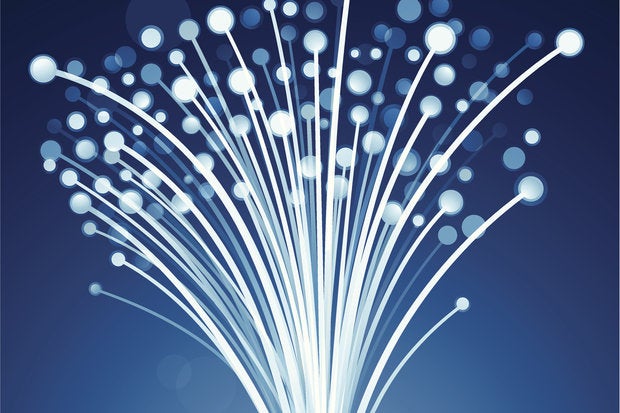Intel turns to light beams to speed up supercomputers
Source: Agam Shah
 Intel will start using light pulses next year to move data at blistering speeds in supercomputers, yielding potentially massive advances in high-performance computing.
Intel will start using light pulses next year to move data at blistering speeds in supercomputers, yielding potentially massive advances in high-performance computing.
Featured Resource
Presented by Scribe Software
10 Best Practices for Integrating Data
Data integration is often underestimated and poorly implemented, taking time and resources. Yet it
Learn More
It will use optical cables to move data more quickly than conventional copper wiring for linking computing and storage units. That faster data movement should improve system performance overall.
"If all your compute nodes are connected via photonics, it does start to make application performance look different," said Charlie Wuischpard, vice president and general manager of Intel's workstations and high-performance computing division.
Light pulses are already used for power-efficient and high-speed data transfers over communications networks, and are also finding a place in PCs and data centers. Intel's Thunderbolt technology uses light to connect computers to peripherals like external hard drives at around 20Gbps. Intel has also developed an optical connector called MXC that can transfer data at speeds of up to 1.6Tbps between servers.
Optics will bring performance advances while reducing power consumption, said Nathan Brookwood, principal analyst at Insight 64.
Supercomputers have a lot of cabinets, processing, and storage units and racks, and moving signals between all the units uses more power than processing itself.
Optical technology requires "a lot less power to send the signal in any arbitrary distance," Brookwood said.
One challenge has been building optical interfaces at a reasonable cost, but Intel has found a cost-effective way to hook up transmitters and receivers to systems, Brookwood said.
"Silicon photonics is technology whose time is coming," Brookwood said.
For Intel, optical technology is also key in surpassing the milestone of exascale computing, in which supercomputer performance is more than 1 exaflop, or million trillion calculations per second. Intel wants to make a 1 exaflop supercomputer by 2020 to 2022 that can fit in a 20-megawatt data center. The fastest computer in the world, Tianhe-2, delivers a peak performance of 33.86 petaflops.
Intel has researched silicon photonics for more than a decade. The optical connection technology will be part of Intel's Omni-Path networking platform and will be available as an alternative to copper connections. It will come with Intel's Knights Landing supercomputing chip, which will be in supercomputers next year. The chip has additional technology such as DDR4 DRAM and a new form of stacked HMC (Hybrid Memory Cube) memory to boost supercomputing performance.
Intel didn't share more details on the protocol that will be used for optical data transfers. Wuischpard said more information will be shared at a later date. Omni-Path isn't based on Infiniband and Intel hasn't said if it would be based on Ethernet or PCI-Express.
Other companies are also looking at optical technology. IBM is researching optics for on-chip communication between transistors, something Intel has not demonstrated or talked about yet.
| }
|